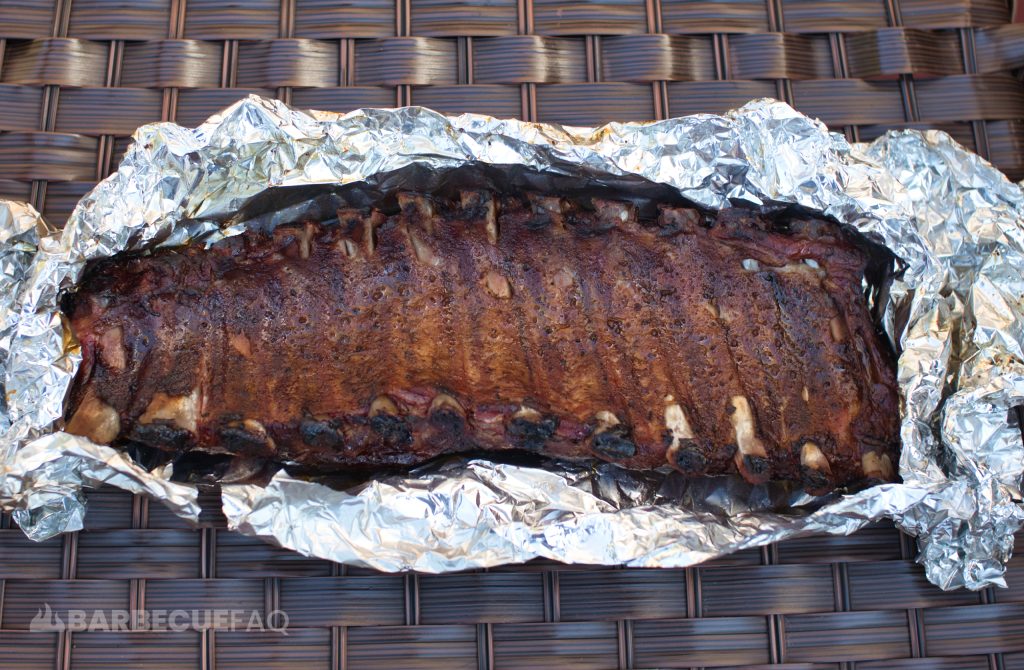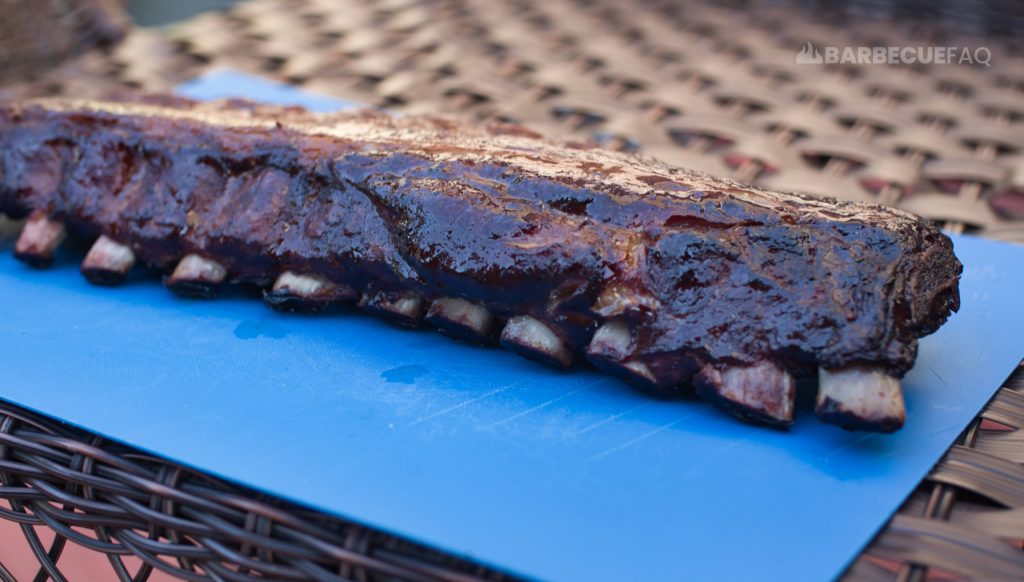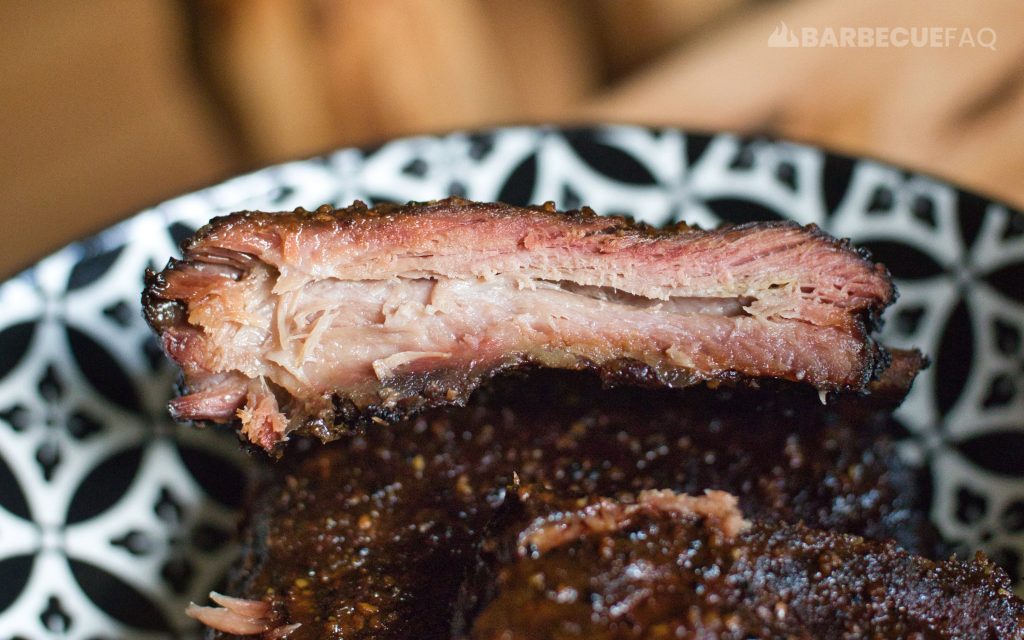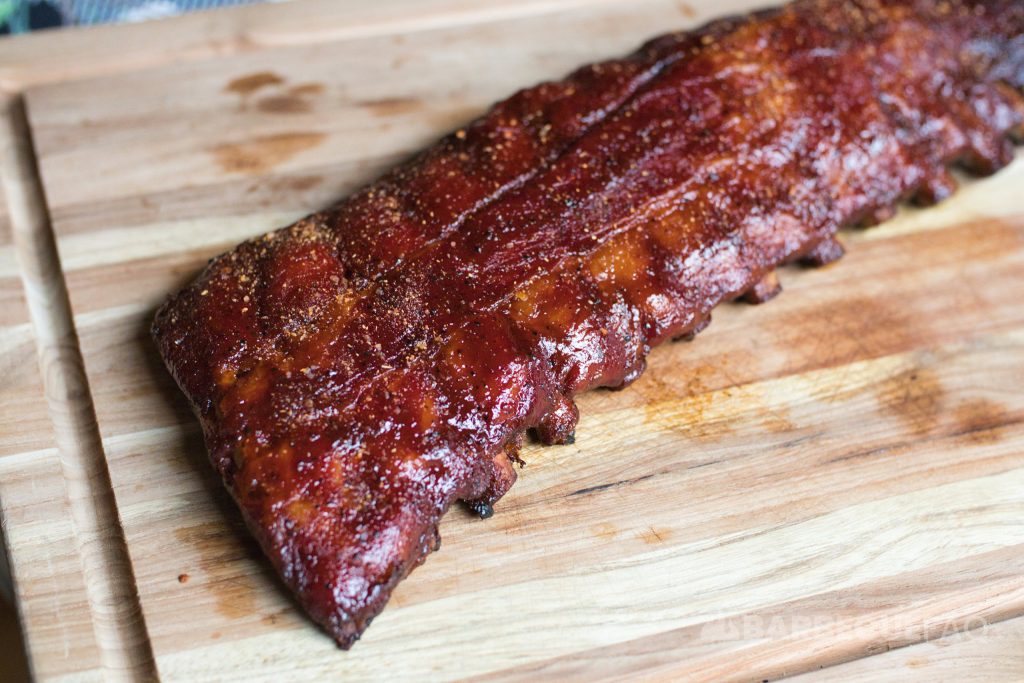There’s 2 types of “resting” we should concern ourselves with.
1. If you’re looking to eat the ribs the same day, smoke them until they’re tender and then rest for 10-15 minutes.
2. If you’re looking to eat the ribs the next day, smoke until near tender, then wrap and hold overnight.
Why Only a Short 10-15 Minute Rest for Ribs
These recommendations are for pork ribs – if you’re wondering about beef ribs, click here to learn more.
Unlike huge cuts of meat like brisket or pork butt, it doesn’t take as long for ribs to go from 200F-ish, down to 150-160F.

Essentially all we’re waiting for is the bones to be at a temperature that they can be safely held.
If you can hold the bones in your fingers without burning yourself, they’re ready to eat.
If you like your ribs “wet” – now is an optimal time to sauce them.
Stop Tenting Your Ribs When You Rest
Don’t do this.
The reason you wrap ribs with foil is to speed-up the cook time.

Since the ribs are already tender, they don’t need to cook anymore – which will happen if you trap heat and steam.
Simply leave them on a serving tray or on a cutting board.
“Resting” Overnight with Spare Ribs
When hot holding, don’t smoke the ribs until they’re tender; Doing so will cause them to dry out and overcook.
Smoke until they’re near tender.
- In terms of internal temperature, wait until around 185-190F.
- If you prefer the bend test, smoke them up until they’re about to bend.

Then wrap the ribs in foil, get your oven set to the lowest temperature setting, and then hot them overnight.
If you have an electric smoker or you’re using your kitchen oven – follow this guide to safe hot holding.
How Long to Rest Beef Ribs?
If you’re smoking beef ribs, wait until around 150-165F internal to slice.
This will typically take 1 hour for dino ribs and 10-15 minutes for back ribs.

Dino ribs are obviously much bigger and it will take longer for the juices to cool and for the meat to gelatinize.
Back ribs have almost no meat on the bone to begin with – and 10-15 minutes is sufficient.




